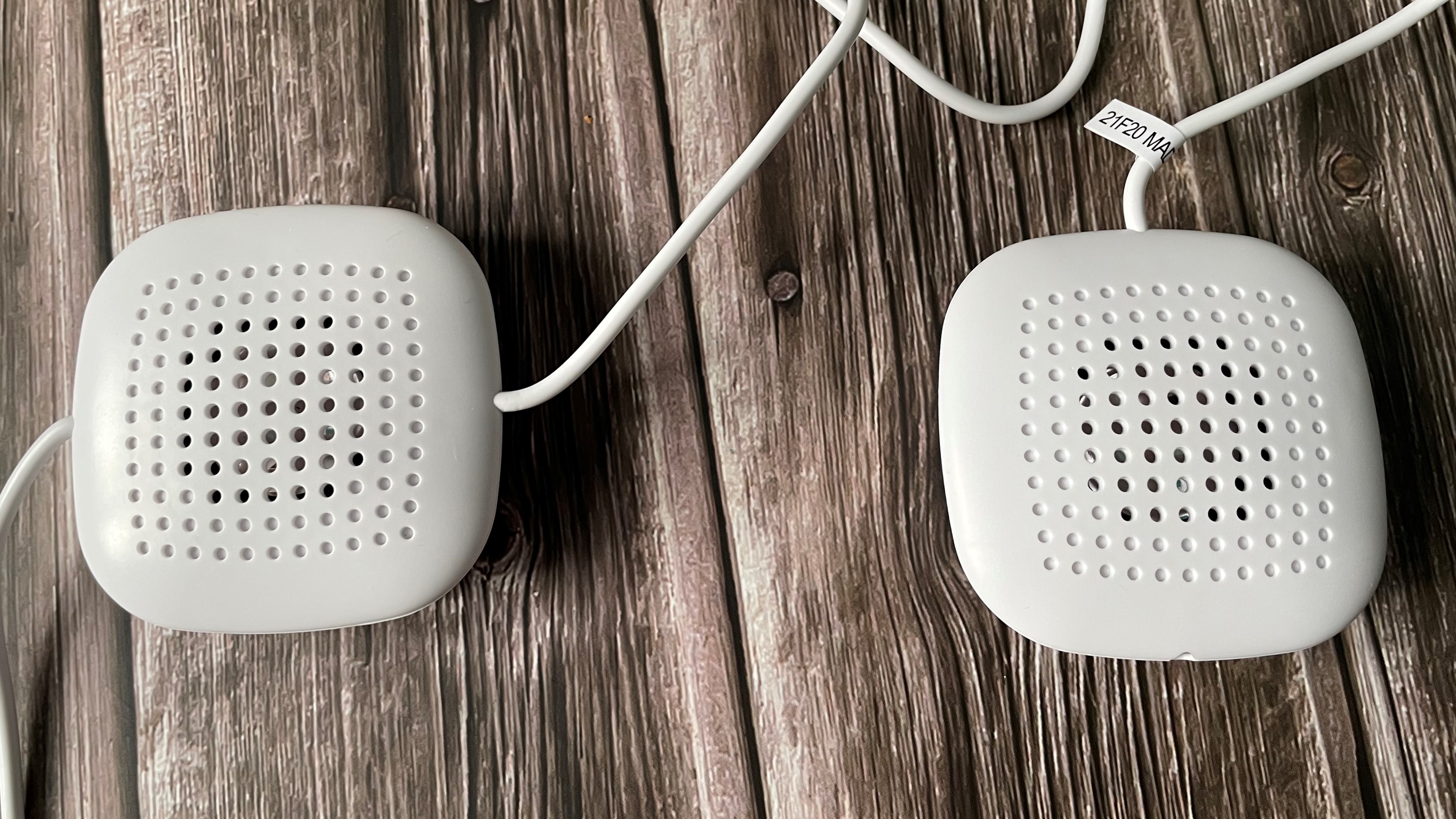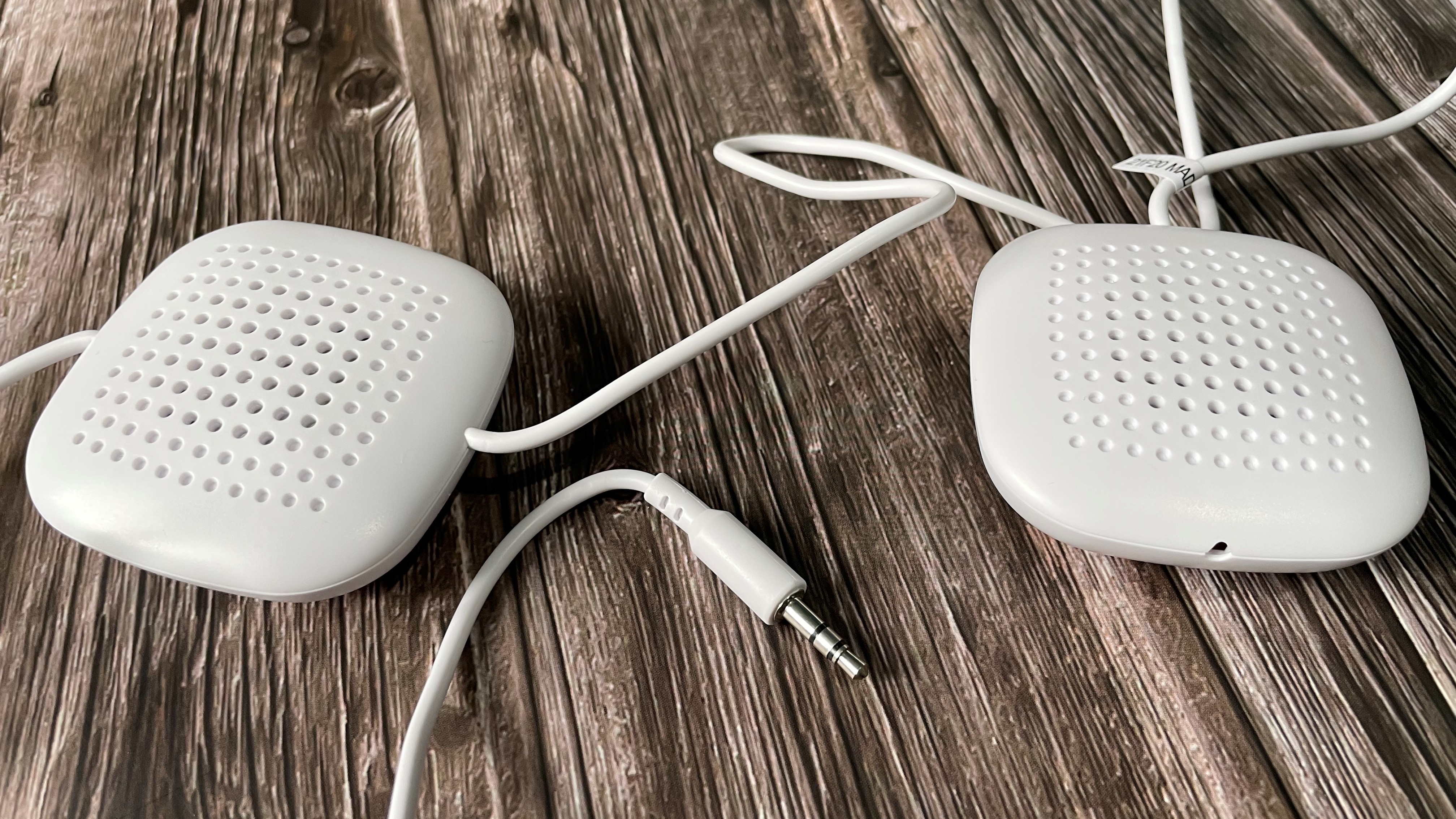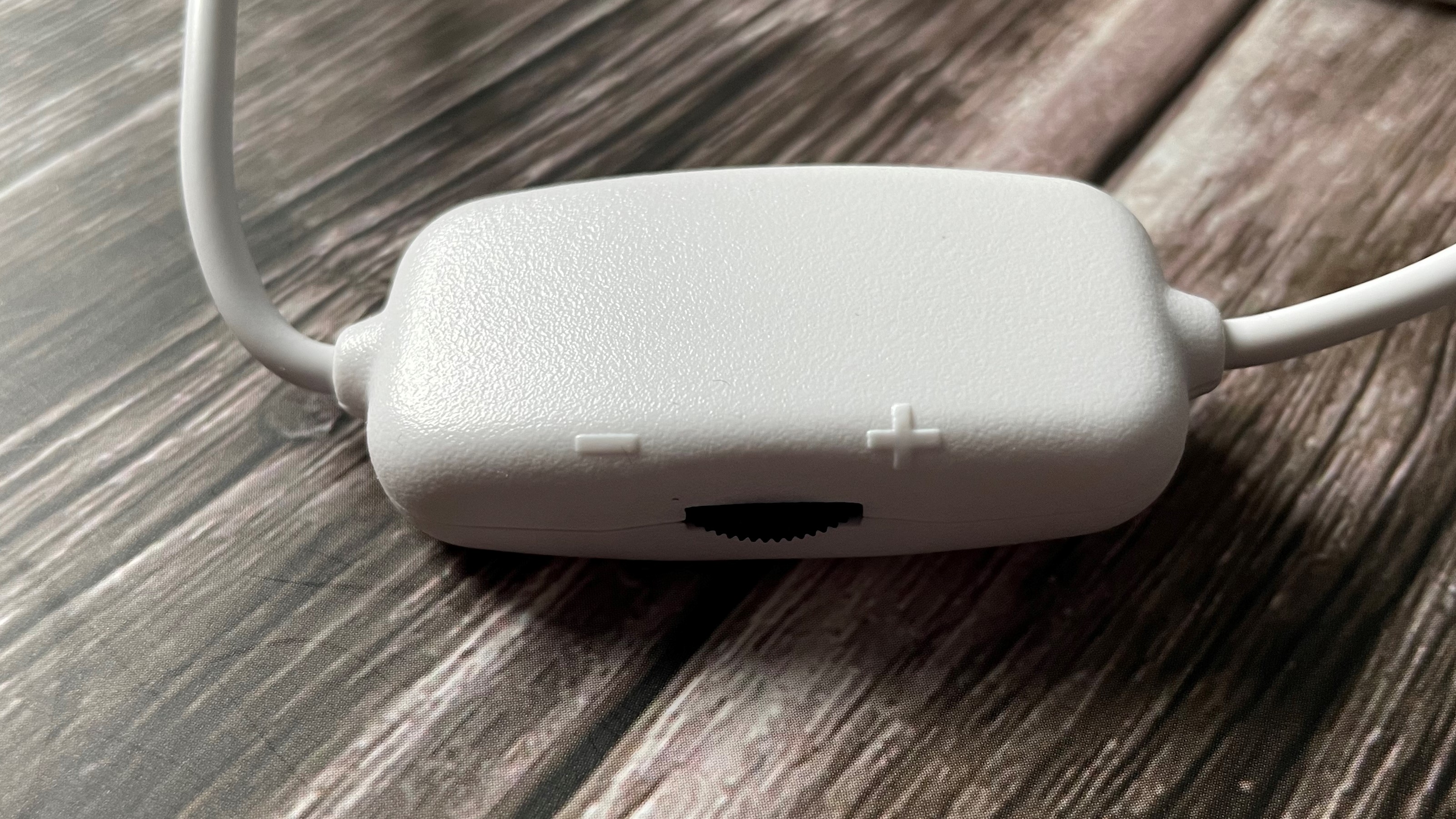TechRadar Verdict
You won't feel these tiny speakers under your pillow as they lull you to sleep, but they work best if you prefer snoozing to gentle ambient noise. They're quite quiet, even if you crank your phone's volume up, and higher frequencies are muddy. Other under-pillow speakers do a better job with music and speech, proving that this isn't a problem innate to such devices.
Pros
- +
Audible at both ends of your pillow
- +
Long cable
- +
No lithium batteries
Cons
- -
High frequencies are muffled
- -
Slippery plastic casing
Why you can trust TechRadar
30-second review
Sound Oasis produces a huge range of sleep devices to help you get a better night's rest, including noise machines, wake-up lights, masks, and under-pillow speakers. This particular pair are mono, but there's also an amplified stereo version available for a little extra cash.
The speakers slip into your pillowcase, underneath the pillow itself, and connect to a phone, radio, MP3 player or other device via a 3.5mm headphone jack. This will be fine if you have an older handset, but if you have a recent iPhone or Pixel phone, you'll need an adapter.
The audio quality is acceptable if you want to listen to white noise (under-pillow speakers can be a good alternative to a white noise machine if your partner prefers to sleep in silence), but higher frequencies aren't rendered well and the overall sound is quite muddy. If you want to listen to audiobooks or music then the Roberts Radio Pillow Talk Speaker would be a much better option, and is around the same price.

Price and availability
The Sound Oasis Sleep Therapy Pillow Speakers cost $19.99 (about £15 / AU$30) direct from Sound Oasis, or from third-party stores like Amazon. This isn’t a big investment, but when it comes to simple pillow speakers, these are one of the more expensive options. You could pick up the excellent Roberts Pillow Talk Speaker for half the price.
They are, however, much cheaper than most sleep headphones, and well worth considering if you dislike having something in your ears overnight.
Design
Each of the Sound Oasis Sleep Therapy Pillow Speakers measures 60 x 60 x 25mm, and the two are connected by a 60cm cable, which gives you plenty of slack to position them where you like. Their smooth plastic cases mean they can shift at night, but Sound Oasis recommends slipping them inside your pillowcase, which will limit how much they can move.
They plug into your phone, MP3 player, tablet, or other audio device of choice using a standard 3.5mm headphone connector at the end of a 2m cable. They have an in-line volume control so you don't have to reach under your pillow, or fumble for your phone in the dark, but if your phone, radio, or other music player of choice doesn't have a headphone jack then you'll need to invest in an adapter.
Sign up for breaking news, reviews, opinion, top tech deals, and more.

Using a headphone jack might seem like an odd choice in 2022 (when we're writing this review), but it makes a lot of sense for a device that's going to be used somewhere with no airflow. A wireless speaker would require a lithium battery, which react very badly to overheating – if one cell overheats, others can follow in a process called thermal runaway, and the battery could even explode or catch fire.
Performance
The long cable attached to the Sound Oasis Sleep Therapy Pillow Speakers means there's plenty of slack to attach them to a phone, MP3 player, radio or other device on your nightstand, and the in-line control is handy for tweaking the volume without having to fumble with a bright screen at night. Its dial is fairly stiff, which is an advantage; you wouldn't want to accidentally turn up the volume in your sleep.
However, in our tests we usually turned the dial up to maximum and left it there. Pillow speakers are never very loud, since they're intended to be used just a few inches from your ear, but this pair are some of the quietest we've tried, even when we turned the volume right up on our phone.

Overall, the audio quality is muddy; higher frequencies don’t have enough power to punch through the muffling effect of the pillow. It’s not too much of an issue if you only want something to play white noise (if you suffer from tinnitus, for example), but if you want to listen to audiobooks or enjoy music without disturbing your partner then you may be disappointed.
The smooth plastic of the speakers means they can shift inside the pillowcase; having a textured or cloth surface would hold them in place better. Even if they do shift, though, you're unlikely to disturb your partner. The low volume means there's very little sound leakage, and you need to be right on top of either speaker in order to really hear it.

Buy it if
You appreciate white noise
If you want soft background noise to help you drift off, these little speakers are a solid choice.
Your partner is sensitive to sound
Even at full volume these speakers are very quiet, so your partner won’t be disturbed by sound leakage at night.
Don't buy it if
You enjoy audiobooks
These little speakers don't render high frequencies very well, so they're better suited to ambient noise than speech. Your favorite narrator will sound better with the Roberts Radio Pillow Talk Speaker.
You have a particularly thick pillow
The Sound Oasis Sleep Therapy Pillow Speakers are fairly quiet, even at their highest volume setting, so you may struggle to hear through a thick layer of feathers or foam.
This article is part of TechRadar's Sleep Week 2022 (running from Sunday 13 to Saturday 19 March), a week-long celebration of all things slumber. We'll be bringing you proven techniques and tips to help you sleep better, and have rounded-up all the top-rated tech to transform your sleep.

Cat is TechRadar's Homes Editor specializing in kitchen appliances and smart home technology. She's been a tech journalist for 15 years, having worked on print magazines including PC Plus and PC Format, and is a Speciality Coffee Association (SCA) certified barista. Whether you want to invest in some smart lights or pick up a new espresso machine, she's the right person to help.
